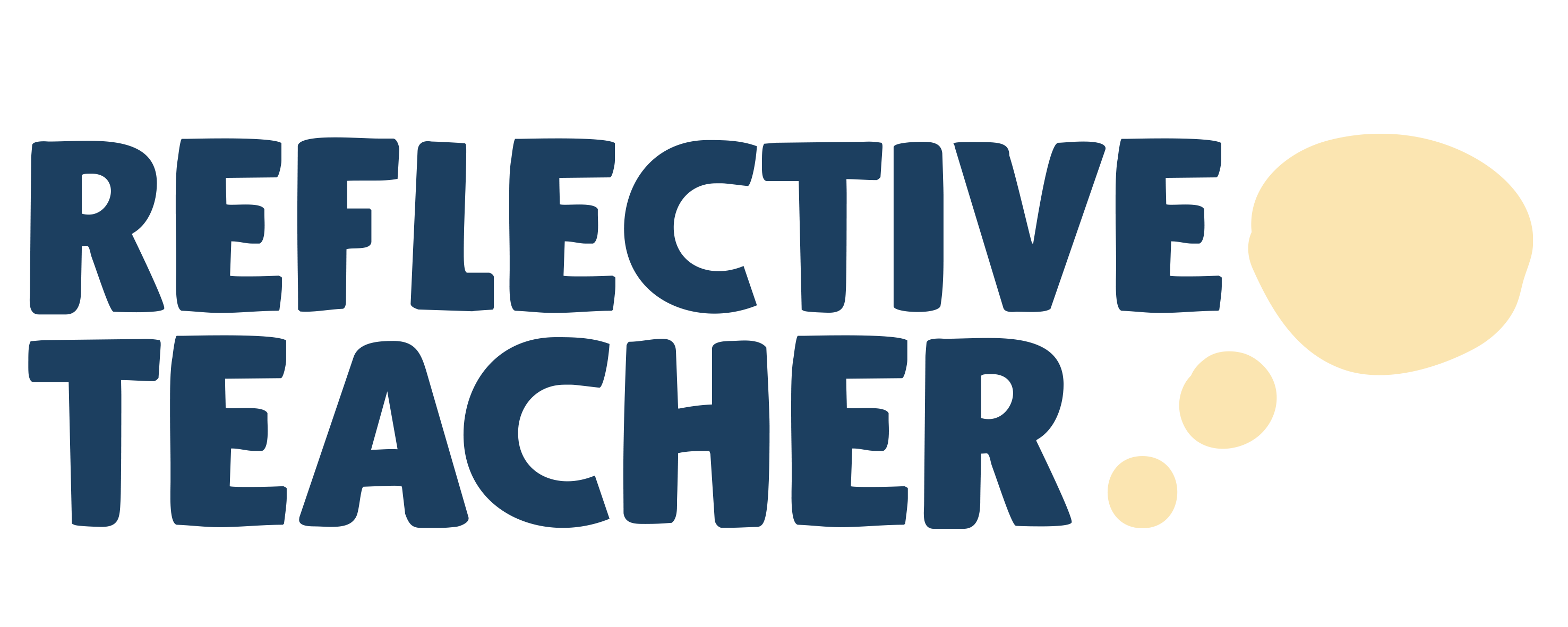Are you a teacher looking to take your classroom from good to great? In the ever-evolving world of education, it’s essential for educators to continually reflect on their practice and seek ways to improve student achievement. This article explores the impact of reflective teacher practice on student outcomes and unveils the strategies and benefits of incorporating reflective practices into your teaching repertoire.
Reflective teacher practice involves taking the time to critically analyze your teaching methods, assess student progress, and make adjustments to optimize learning experiences. By engaging in self-reflection and seeking feedback from colleagues and students, teachers can identify areas for growth and implement effective instructional strategies that meet the diverse needs of their students.
From enhancing student engagement and motivation to promoting higher-order thinking skills, reflective teacher practice has been shown to significantly improve student achievement. By continuously refining your teaching practice, you can create a dynamic learning environment that fosters growth and empowers students to reach their fullest potential.
Discover how reflective teacher practice can transform your classroom and propel your students toward academic success in this in-depth article.

The importance of reflective teacher practice
Reflective teacher practice involves taking the time to critically analyze your teaching methods, assess student progress, and make adjustments to optimize learning experiences. By engaging in self-reflection and seeking feedback from colleagues and students, teachers can identify areas for growth and implement effective instructional strategies that meet the diverse needs of their students.
Reflective practice is not a one-time event but an ongoing process that allows teachers to continuously evaluate and refine their teaching approaches. It provides the opportunity to learn from both successes and challenges, fostering professional growth and improvement. By adopting a reflective mindset, teachers can create a culture of continuous learning in their classrooms, ultimately benefiting their students’ academic performance and overall development.
Definition and characteristics of reflective teacher practice
Numerous research studies have demonstrated the positive correlation between reflective teacher practice and student achievement. When teachers take the time to reflect on their teaching methods and student outcomes, they can identify areas for improvement and implement targeted instructional strategies. This intentional approach leads to increased student engagement, motivation, and learning outcomes.
Reflective teacher practice also enhances the development of higher-order thinking skills among students. By regularly assessing student progress and adjusting instructional approaches, teachers can challenge students to think critically, solve problems, and apply their knowledge in real-world contexts. This approach fosters deeper learning and helps students develop the skills necessary for success in a rapidly changing world.
The impact of reflective teacher practice on student achievement
Implementing reflective teacher practice requires a systematic approach that integrates reflection into the daily routines and culture of the classroom. Here are some effective strategies to incorporate reflective practices into your teaching repertoire:
1. Journaling and self-reflection: Encourage teachers to maintain a reflective journal where they can document their thoughts, experiences, and insights. Regular self-reflection allows teachers to gain a deeper understanding of their instructional practices and make informed decisions for improvement.
2. Peer collaboration and feedback: Foster a culture of collaboration among teachers by providing opportunities for peer observation and feedback. By observing and discussing each other’s teaching practices, teachers can gain new perspectives, share best practices, and receive constructive feedback to enhance their teaching strategies.
3. Data analysis and assessment: Utilize student data and assessments to identify patterns and trends in student performance. Analyzing this data allows teachers to reflect on the effectiveness of their instructional strategies and make data-driven decisions for improvement.
4. Professional learning communities: Encourage teachers to participate in professional learning communities where they can engage in collaborative discussions and share experiences with like-minded educators. These communities provide a supportive environment for reflection, learning, and growth.
By implementing these strategies, teachers can cultivate a reflective practice that not only benefits their own professional development but also maximizes student learning outcomes.
Strategies for implementing reflective teacher practice
Self-reflection is a critical component of reflective teacher practice. It provides teachers with the opportunity to pause, analyze, and evaluate their teaching methods, beliefs, and assumptions. By asking themselves thought-provoking questions, such as “What worked well in my lesson? What could I have done differently?” teachers can gain valuable insights into their instructional practices.
Self-reflection enables teachers to become more self-aware and mindful of their teaching approaches. It allows them to identify their strengths and areas for improvement, leading to more effective instructional strategies. Through self-reflection, teachers can also develop a deeper understanding of their students’ needs, interests, and learning preferences, enabling them to tailor their instruction to meet individual needs.
The role of self-reflection in improving teaching practices
Several tools and resources are available to support teachers in developing and enhancing their reflective practice. These tools provide a structured framework for self-reflection and assist teachers in analyzing their teaching methods, student outcomes, and areas for improvement. Some popular tools include:
1. Reflective journals: Online platforms and apps that allow teachers to document their reflections, set goals, and track progress over time.
2. Video-based reflection: Platforms that enable teachers to record their lessons and review them later for self-analysis and feedback.
3. Reflection rubrics: Rubrics that provide specific criteria for evaluating teaching practices and guiding self-reflection.
4. Online communities: Social media groups and forums where teachers can connect, share experiences, and seek advice from other educators.
By utilizing these tools and resources, teachers can enhance their reflective practice and promote continuous improvement in their teaching methods.
Tools and resources for supporting reflective teacher practice
Numerous schools and educational institutions have embraced reflective teacher practice and witnessed significant improvements in student achievement. Here are a few case studies and success stories:
1. Oakridge Elementary School: Oakridge Elementary implemented a comprehensive professional development program focused on reflective practice. Through regular self-reflection, peer collaboration, and data analysis, teachers at Oakridge Elementary have transformed their instructional practices, resulting in increased student engagement, higher test scores, and improved overall school performance.
2. Smith High School: Smith High School introduced a reflective coaching model where teachers receive personalized coaching and feedback based on their self-reflection and classroom observations. This coaching model has led to a more reflective teaching culture, improved instructional practices, and enhanced student outcomes.
These case studies highlight the transformative power of reflective teacher practice in improving student achievement and creating a positive learning environment.
Case studies and success stories of schools implementing reflective teacher practice
For teachers interested in enhancing their reflective practice, various professional development opportunities are available. These opportunities provide teachers with the knowledge, skills, and resources necessary to develop a reflective mindset and implement effective instructional strategies. Some professional development options include:
1. Workshops and seminars: Attend workshops and seminars that focus on reflective teaching practices, self-reflection techniques, and data analysis.
2. Online courses: Enroll in online courses that provide in-depth training on reflective teaching practices and offer practical strategies for implementation.
3. Coaching and mentoring: Seek out coaching and mentoring programs where experienced educators can provide guidance and support in developing a reflective practice.
4. Conferences and symposiums: Participate in conferences and symposiums that bring together experts in reflective teaching practices and provide opportunities for networking and learning.
By investing in professional development opportunities, teachers can enhance their reflective practice and create a positive impact on student achievement.
Professional development opportunities for teachers interested in enhancing their reflective practice
Implementing reflective teacher practice is not without its challenges. Some common challenges include:
1. Time constraints: Teachers often have limited time available for self-reflection and professional development. Finding dedicated time for reflection and implementing reflective practices can be challenging in a busy teaching schedule.
2. Resistance to change: Some teachers may be resistant to change or may not see the value of reflective practices. It is essential to provide ongoing support and create a culture that values and encourages reflection.
3. Lack of resources: Limited access to tools, technology, and resources can impede the implementation of reflective practices. It is crucial to provide teachers with the necessary resources and support to facilitate their reflective journey.
When implementing reflective teacher practice, it is essential to consider these challenges and develop strategies to overcome them. Creating a supportive environment, providing dedicated time for reflection, and offering resources and professional development opportunities can help address these challenges.
Challenges and considerations for implementing reflective teacher practice
Reflective teacher practice has the potential to transform education by empowering teachers to continuously improve their instructional practices and enhance student achievement. By embracing a reflective mindset, teachers can create dynamic learning environments that foster growth, engagement, and academic success.
As the field of education continues to evolve, the importance of reflective teacher practice will only increase. By incorporating reflective practices into their teaching repertoire and continually seeking opportunities for growth and improvement, teachers can make a lasting impact on their students’ lives.
In conclusion, reflective teacher practice is a powerful tool that enables educators to take their classrooms from good to great. By engaging in self-reflection, seeking feedback, and implementing effective instructional strategies, teachers can optimize student learning experiences and promote academic success. Embrace reflective practice and unlock the full potential of your teaching journey. The future of education starts with you.
Conclusion: The future of reflective teacher practice and its potential for transforming education
Reflective teacher practice has numerous benefits for both teachers and students. When teachers take the time to reflect on their teaching methods, they gain valuable insights into what works and what doesn’t in the classroom. This self-awareness allows them to make informed decisions about instructional strategies and tailor their approach to meet the individual needs of their students.
Moreover, reflective practice encourages teachers to be lifelong learners. By continuously evaluating their teaching methods, seeking out professional development opportunities, and staying up-to-date with the latest research, teachers can continue to grow and improve as educators. This commitment to ongoing improvement not only benefits teachers but also has a direct impact on student achievement.



No responses yet